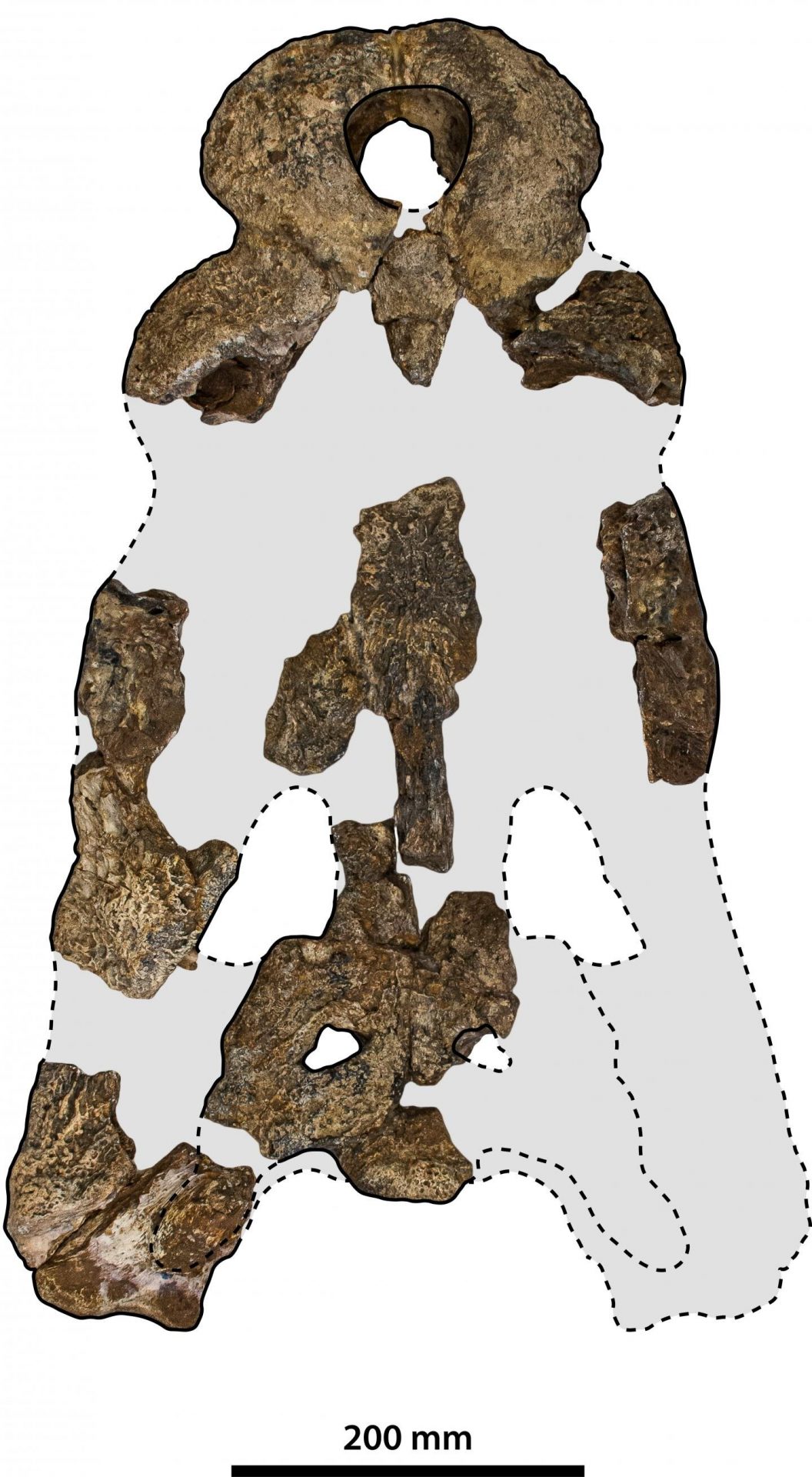A prehistoric crocodile measuring more than five meters long — dubbed the “swamp king” — ruled Southeastern Queensland waterways only a few million years ago. University of Queensland researchers identified the new species of prehistoric croc — which they named Paludirex vincenti — from fossils first unearthed in the 1980s.

Paludirex vincenti was like an Indo-Pacific crocodile on steroids
UQ Ph.D. candidate Jorgo Ristevski, from UQ’s School of Biological Sciences, said they named the species after Geoff Vincent who discovered the giant fossilized skull near the town of Chinchilla, adding:
“In Latin, ‘Paludirex’ means ‘swamp king’, and ‘vincenti’ honours the late Mr Vincent, for several years the fossilised skull was on display in the Queensland Museum, before it was donated to the Chinchilla Museum in 2011. The ‘swamp king’ was one intimidating croc.
“Its fossilised skull measures around 65 centimetres, so we estimate Paludirex vincenti was at least five metres long. The largest crocodylian today is the Indo-Pacific crocodile, Crocodylus porosus, which grows to about the same size. But Paludirex had a broader, more heavy-set skull so it would’ve resembled an Indo-Pacific crocodile on steroids.”
Paludirex was one of the top predators in Australia a few million years ago, capable of preying on giant prehistoric marsupials. Ristevski said:
“The waterways of the Darling Downs would once have been a very dangerous place because of it.”

Mr. Ristevski’s supervisor, Dr. Steve Salisbury, said various species of prehistoric crocodylians had existed in Australia:
“Crocs have been an important component of Australia’s fauna for millions of years. But the two species we have today — Crocodylus porosus and Crocodylus johnstoni — are only recent arrivals, and were not part of the endemic croc fauna that existed here from about 55 million years ago.
“Whether Paludirex vincenti went extinct as a result of competition with species like Crocodylus porosus is hard to say. The alternative is that it went extinct as the climate dried, and the river systems it once inhabited contracted — we’re currently investigating both scenarios.”
The research has been published in the open-access journal PeerJ.
Provided by: University of Queensland [Note: Materials may be edited for content and length.]








